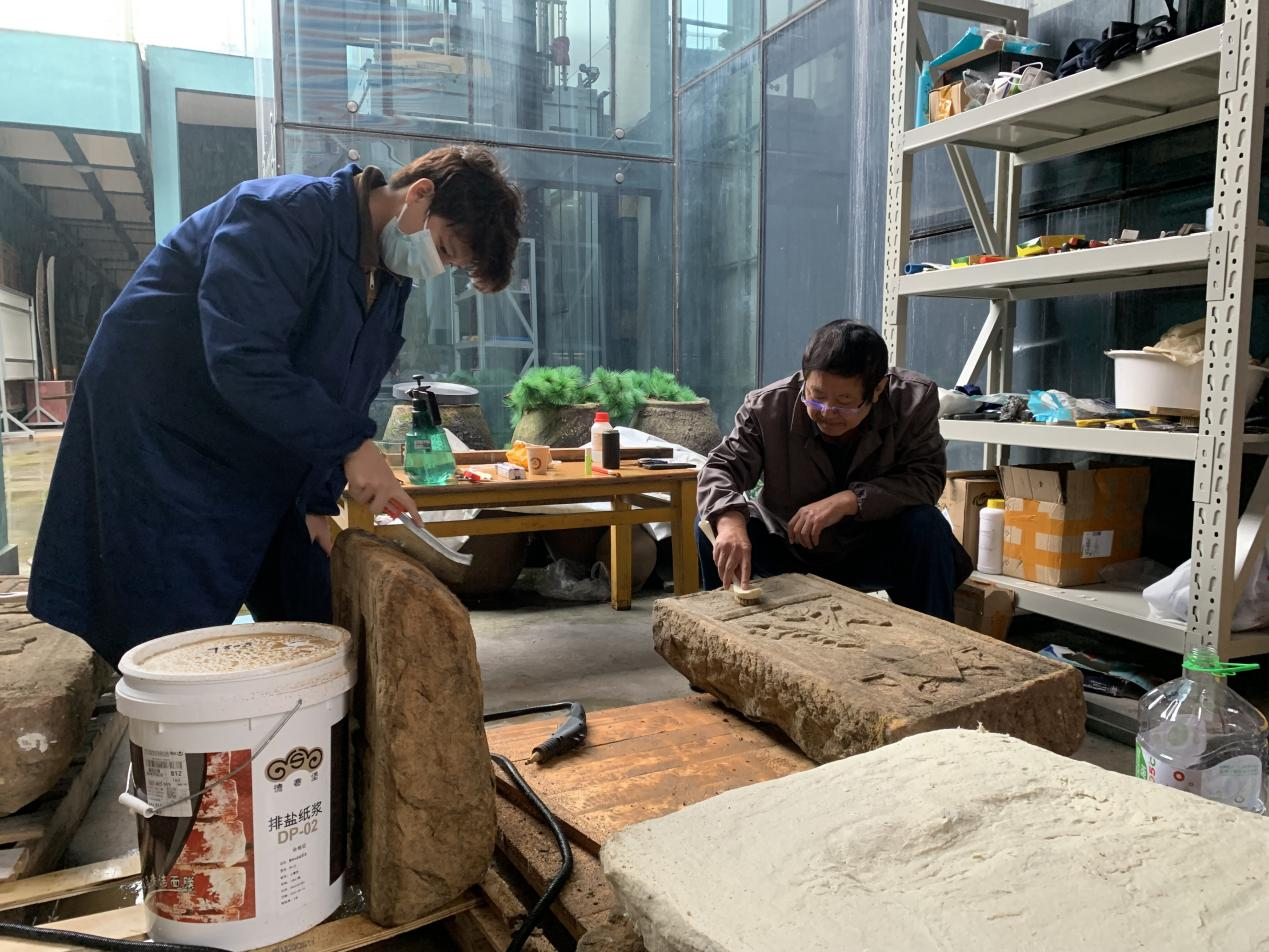 Bridging News
Bridging News
Wansheng Museum Launches Cultural Relics Conservation and Restoration Project
In a corner of the Wansheng Museum in Chongqing, a dialogue with history was unfolding. There were no roaring machines here, only the soft rustle of brushes gliding over stone carvings, reverberating in the quiet restoration room. Four cultural relics conservators were painstakingly "healing" a stone cultural relic from a Song Dynasty tomb complex. Among them, Lei Jinming, with 50 years of experience, exuded a remarkable sense of calm.

"These stone carvings, like old friends, always slowly 'share' their stories with us," Lei said, picking up a brush and carefully cleaning the attached salt stains and mildew, adding that "we must help them 'heal' little by little—patiently and meticulously—without any mistakes."
To revive and rejuvenate cultural relics today, the Wansheng Museum has initiated a valuable cultural relics conservation and restoration project, turning the concepts of cultural relics conservation in the new era into concrete actions. This project involves 16 cultural relics (15 sets) collected by the museum, including 13 stone ones (12 sets) and three wooden ones (three sets). Among them, some stone carving cultural relics came from the Tongjiangwan Song Dynasty tomb complex discovered in 2019. With an exquisite craft of carving and vivid patterns, they are important material evidence for studying Song Dynasty burial culture.
Since the project was launched, the restoration work has been in full swing. In the restoration work room, time seemed to slow down, and each step of the operation appeared particularly careful. The conservators use magnifying glasses to examine the surfaces of the stone carvings, closely observing every subtle change to assess the "condition" of the carvings. "'Detoxifying' these stone carvings is not easy; the salt is hidden deep, like an invisible 'nidus'," Lei said with a smile, "We are as careful as doctors treating a 'nidus'". Every detail of the restoration was realized through the combination of technology and craftsmanship.
To truly achieve the 'rebirth' of cultural relics, relying solely on manual skills is far from sufficient; technological methods have also played a critical role. The restoration team first used instruments to detect and analyze the internal structures of the stone carvings, confirming the damaged areas and types of deterioration. They then used a high-precision microscope to study the surface weathering and ultimately developed a targeted restoration plan. During the restoration process, through the combination of modern technology and traditional craftsmanship, potential hazards to the cultural relics were eliminated, the relics' original appearances were restored, and their stable condition was maintained, thereby laying a foundation for better preservation and display.
"We hope that through these efforts, the historical memories of Wansheng can be preserved," said a relevant person in charge of the Wansheng Museum, noting that restoration work is not only an in-depth restoration of the museum's collections but also an exploration and practice of methods for cultural heritage protection. Through the integration of scientific testing and traditional craftsmanship, the museum has successfully restored the original appearances of multiple valuable cultural relics. In the next step, the museum will continue to strengthen conservation efforts and improve restoration techniques, allowing more ancient cultural relics to be displayed to the public, fostering a dialogue between history and contemporary society, and breathing new life into these treasures.
 Related Stories
Related Stories